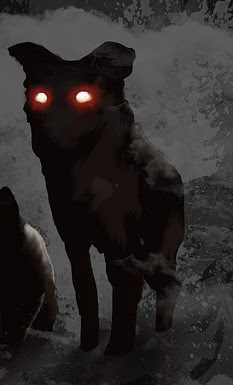 |
| Credit: Pixabay |
No, I’m not reposting the Book-To-Movie from three months ago. This week’s Book-To-Movie is reviewing a different film adaptation of Arthur Conan Doyle’s “The Hound of the Baskervilles”. Last time, we reviewed the 1939 adaptation starring Basil Rathbone. This time we’re reviewing Hammer Studios’ 1959 version starring that other big name in horror, Peter Cushing. Last time, I said I hadn’t seen this version. But only a week ago I came across it on the streaming video website, Tubi. It was under the category of movies that are “Leaving Soon”. So, I thought if I wanted to see it for free then I’d better watch it right away and so did. (Don’t get me wrong, I don’t always go cheap. But, hey, who doesn’t like freebies?) This movie wasn’t a bad adaptation of the book. In fact, it only fell short of matching the quality of the 1939 film by a couple details.
The Book
Because we went over the book, “The Hound of the Baskervilles”, in the earlier Book-To-Movie, I’m only going to give a brief synopsis of it here. For a more detailed synopsis, check out the earlier review.
In Conan Doyle’s 1902 novel, “The Hound of the Baskervilles”, Sherlock Holmes and his sidekick, Dr. Watson, attempt to track a killer who threatens the life of a young heir, Sir Henry Baskerville. In order to solve the case, the two detectives must find out if the killer is even human. Mostly set on the Baskerville estate on the secluded moors, the locals believe that a demon dog haunts the area. They, like much of the Baskerville line, believe the family has been cursed by the dog due to an ancestor’s abuse towards his wife. It’s this deadly canine that some believe will kill the young Baskerville heir.
The Movie
The Hammer film of “Hound” is directed by Terrence Fisher, and stars Peter Cushing as Holmes, Andre Morell as Dr. Watson and Christopher Lee as Sir Henry. The first two of these actors do a good job of portraying their characters. Lee does at least a fair job portraying his even though the gentleman role is atypical of his more villainous ones such as Dracula. But in no way is that what makes this movie fall short in quality of the 1939 one, directed by Sidney Lanfield. Neither is it the fact that the hound is not as monstrous in appearance as it’s described in the book; the earlier film had that same problem. However, the hound’s howl is more menacing and more unearthly-sounding than that in Lanfield’s movie. Also, like the earlier film, certain scenes from the book are omitted in the Hammer version and a few new ones added without straying from the original plot.
The real problems with the Hammer movie that make it fall short of being a match for the 1939 one is in the characterisation and conclusion. While the main characters are well-portrayed overall, they’re all temperamental. Even though they’re well distinguished from each other, this trait takes away from that distinction. The other problem is that the movie’s ending does not tie up the loose ends: certain sublots and questions concerning the case do not clearly come together or get answered by the end. Other than these two problems, the movie in general is impressing.
I wouldn’t say Hammer’s “Hound of the Baskervilles” is Terrence Fisher’s best horror film. He’s made far better ones than that. However, it’s made good overall and almost matches the quality of Sidney Lanfield’s adaptation. But neither movie comes close to matching the quality of the book. Conan Doyle had a writing style that can’t be duplicated in the cinematic form and he knew his characters too well.
To Come . . .
This upcoming week the second issue to my newsletter, “Night Creatures’ Call”, releases. If you have not signed up to be on the newsletter list, you can do so here. Also look out for my books to go on discount starting July 1st as part of Smashwords summer sale!
Have you read Arthur Conan Doyle’s “The Hound of the Baskervilles” or seen the Hammer movie adaptation? Will you be checking out the Smashwords summer sale in July?
Until next time . . .
Comments
Post a Comment